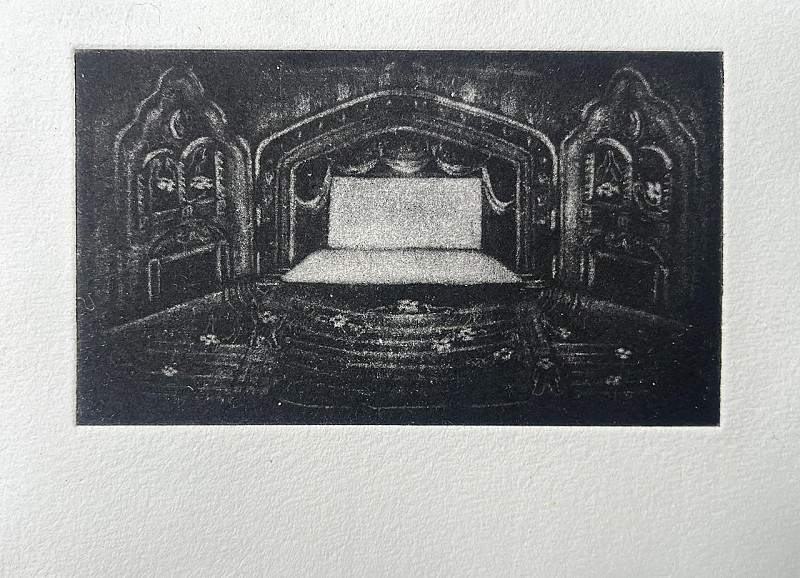- performance
- Zita Oranje
- 2025
- Mezzotint
- Framed
- 1/10
- Sheet Size: 19 x 14 centimeters
ZITA ORANJE
SCAPE EXHIBITION
ARTIST BIO
Zita Oranje (b. 2001) Is a visual artist and curator based in Pretoria, RSA, and is currently
working towards her MA in Fine Arts at the University of Pretoria. Oranje's material focus is
primarily on traditional modalities of art-making, namely drawing and sculpture, which she
conceptually situates within theatrically staged, and directed installations. Her continued
interest in these mediums is complemented by research into traditional theatrical
iconography and characters, as well as the histories of representation of the expression of
sincerity and authenticity in theatre.
Her work has been shown within several group exhibitions, some of her more recent being,
Turbine Art Fair Paper (2024), The Labyrinth Project's Among Other Things (2024), and
Berman Contemporary’s The New Vanguard: A Moving Perspective (2024), Javett UP
Bridge Gallery (2024), The Viewing Room (2025), the University of Pretoria 2-1 Gallery
(2025), and PULP’s Third Space (2025). In 2024, she was also a finalist within the Sasol
New Signatures Art Competition.
ARTIST STATEMENT
Theatricality is inherent to most interactions, not only through grand gestures or overt
performances but through the smallest exchanges that compose our daily lives. The stage,
in this sense, is not confined to the theatre. It extends into our conversations, our silences,
and the gestures of recognition that pass between us.
In these works, the theatre becomes a kind of landscape, a meeting ground between the
public and the private, the performed and the felt. The empty proscenium, stripped of actors,
lights, and narrative, transforms into an emotional terrain, a still and anticipatory moment
before the encounter. It holds the same tension as a held breath, a quiet space between
presence and absence, expectation and memory.
Opposite this suspended architecture is the terrain of the body. The figures, twisting and
intimate, evoke a bodily landscape that speaks of encounter and communication. Their
gestures suggest proximity and distortion, where affection, exhaustion, and connection fold
into one another.
Together, these images form an interior theatre of relation. They trace how we construct and
inhabit emotional and physical spaces, how we stage ourselves in moments of vulnerability
and joy. This exhibition invites us to navigate these scapes, including theatrescapes,
bodyscapes, and mindscapes, as reflective environments that transform ordinary
interactions into gestures of meaning.
Here, escapism is not avoidance but a way of seeing. It becomes an act of care, a choice to
engage with the texture of presence itself.

